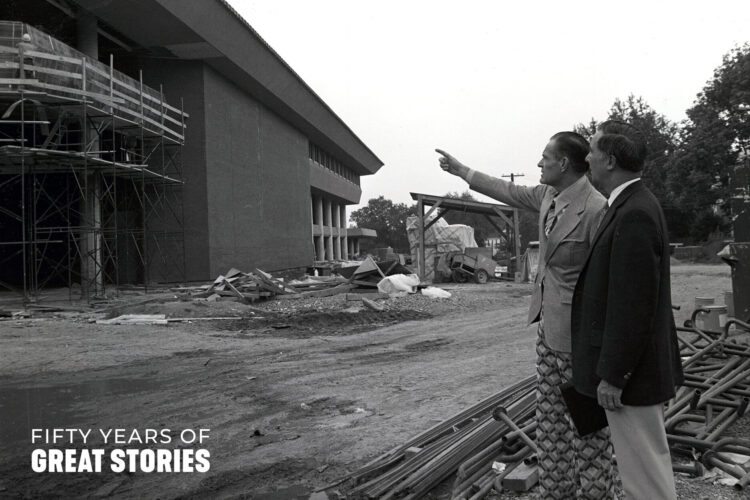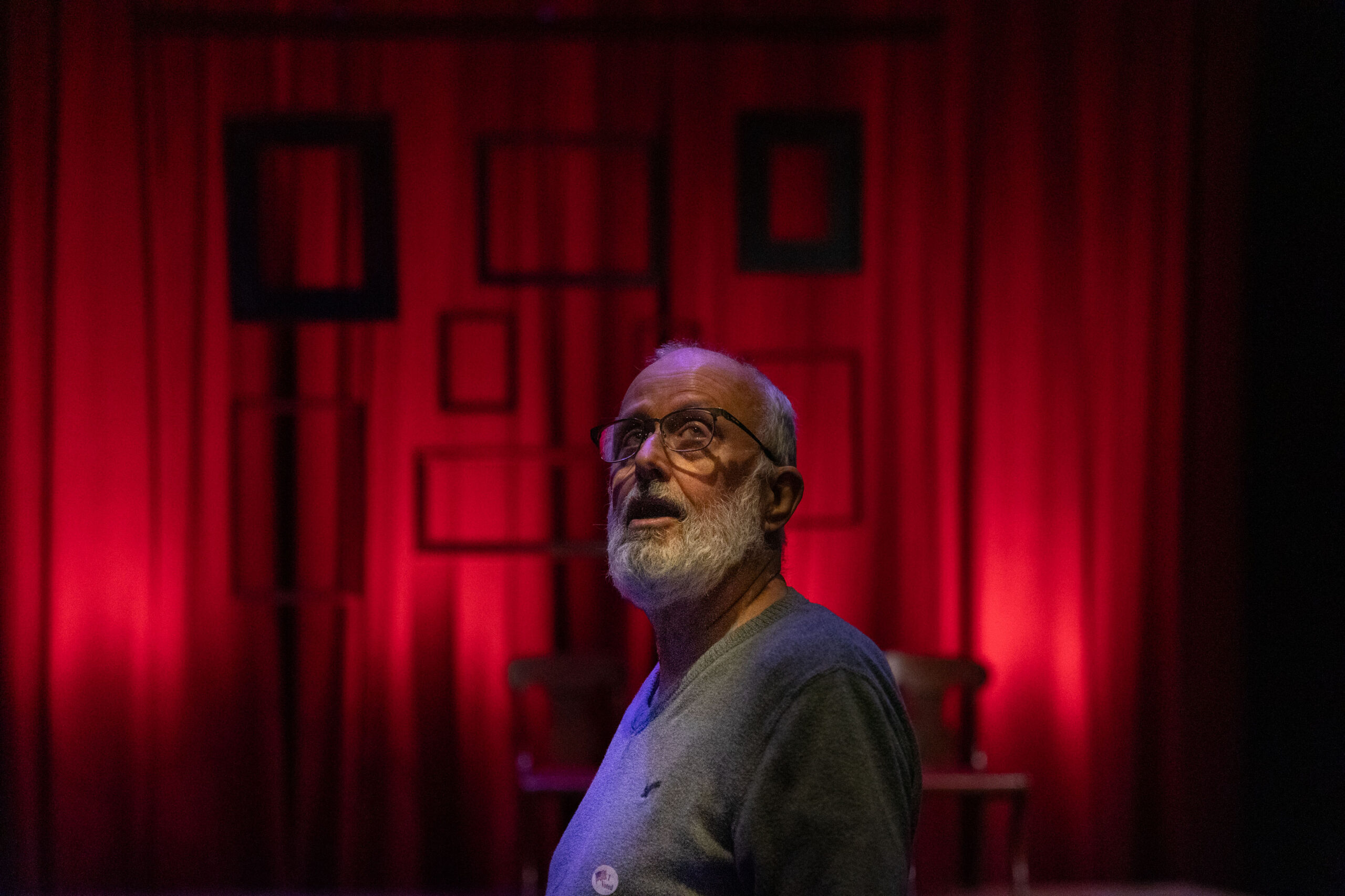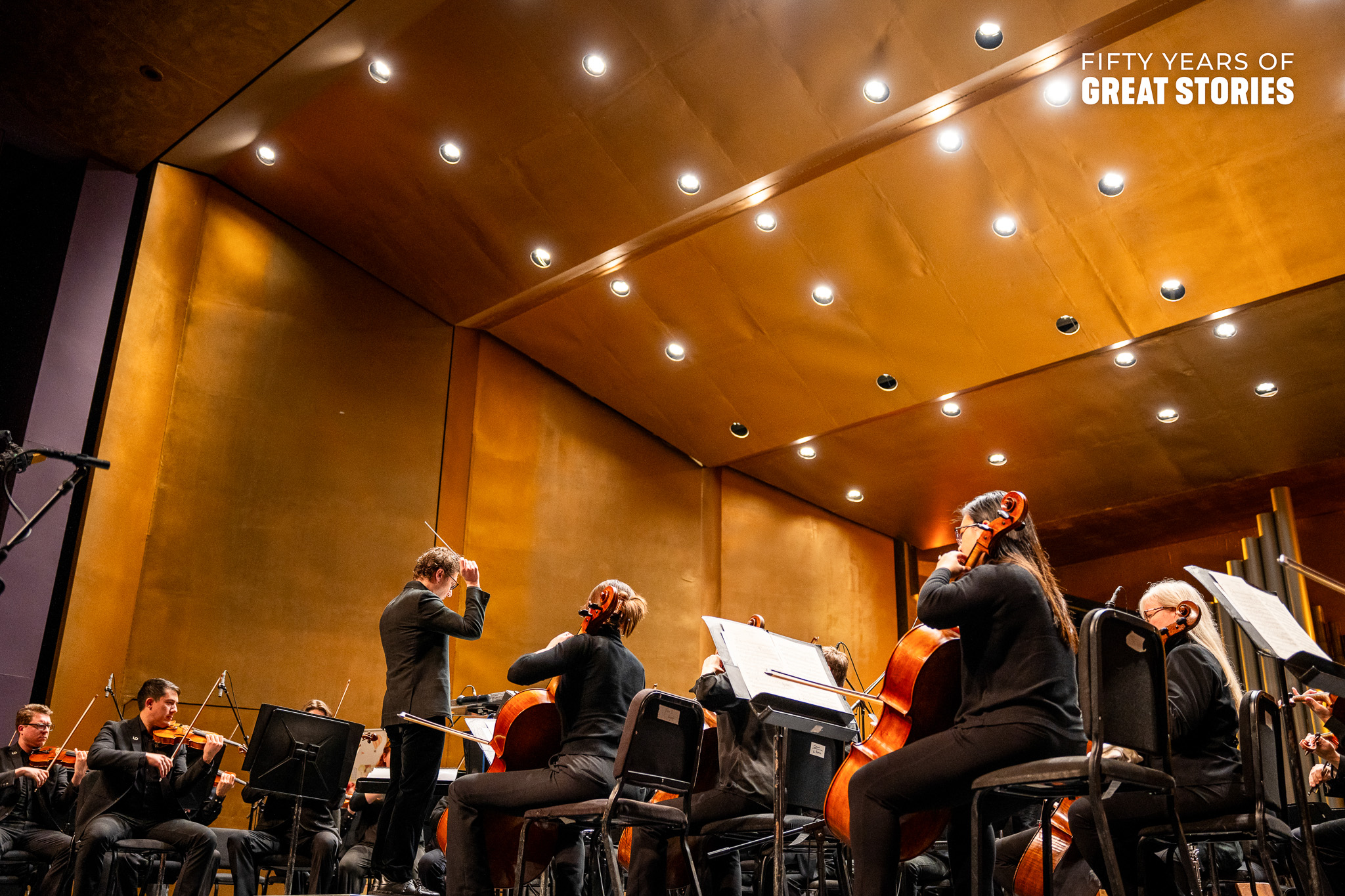Follow along as we celebrate our 50th Anniversary with 50 Years of Great Stories! These stories of impact are drawn from the past and present, told by our friends and neighbors to reflect the power of authentic connections and experiences.
Help make the Norton Center’s next 50 years even greater by donating today.
The Coming of Age of an Idea
When Thomas A. Spragens stepped into office as the President of Centre College in 1957, he found a college desperately in need of growth and ready for change.
Spragens knew that these changes weren’t going to come quickly or easily, but he had what Centre needed most at the time: a vision. A vision of an inclusive campus that would nurture students of all races and identities. A vision of new campus facilities, including the improbable, fantastical dream of a world-class performing arts center. A transformational period was on the horizon- waiting for Spragens to put in the work for Centre’s future development.
At the time of Spragens’ arrival, Centre was operating under Kentucky’s Day Law, which prohibited black and white students from attending the same school. As more and more students were coming to Centre for their education, the need for policy and structural change became impossible to ignore.
Prior to the presidential transition in 1957, Spragens’ predecessor Walter Groves was advocating for integration at Centre, but was receiving pushback.
Before Spragens accepted the presidency, he made his position on integration very clear: any institution should accept students without regard to race; a diverse student body was an educational benefit; he would not only be open to African American students at Centre, but would actively encourage their admission.
In 1958, with Spragens’ pushing the Board to move forward and advocating for integration, Centre College officially adopted a new admissions policy:
“Centre College is committed to a selective policy of admission. It is our purpose to maintain a wholesome environment in which students of capacity above the average may proceed without hindrance to the attainment of superior academic goals. Candidates for admission will be judged in terms of scholastic aptitudes giving promise of a constructive contribution to the life of the campus and of potential future leadership in human affairs. No candidate will be arbitrarily excluded on grounds of race or creed.”
Spragens’ push for growth didn’t slow after this important step forward. That same year, he began to lay out a master plan for the future development of Centre’s campus- one that included a brand-new performing arts center.
“We knew then,” said Spragens in a 1973 interview with the Courier-Journal, “that we would eventually need new facilities for our fine arts departments, and we contemplated the need for an adequate auditorium. After all, we had no place that would house even all our students and our staff, if Centre grew as we planned that it should.”
Spragens had a vision: a world-class arts center on Centre’s campus that would be open not only to students and employees but also to the people of Central Kentucky and beyond. This dream was shared by Chauncey Newlin, Centre’s board chair from 1969 until 1977, and the two worked closely together to make it a reality.
The project was, at the time, the biggest and most ambitious constructional undertaking Centre College had ever seen. At the suggestion of Jane Morton Norton, Centre trustee and eventual Norton Center namesake, the Taliesin Associated Architects of the Frank Lloyd Wright Foundation were hired to design the new building, with Wright’s protégé William Wesley Peters at the helm.
In 1971, the official announcement was made: construction would begin on Centre College’s Regional Arts Center. The 5-million-dollar project would be a tribute to the late Wright, incorporating his philosophy of organic architecture in every aspect as the building took form.
Spragens watched his vision take shape: a center that provided for the academic needs of music, drama and the arts; a center that was an academic facility of the College while also serving as a public cultural gathering space.
The Regional Arts Center opened on September 22, 1973, with the Kentucky Opera Association’s premiere of “OTELLO” alongside a special exhibit loaned from the famed Guggenheim Museum.
As Spragens wrote in a pamphlet celebrating the opening of the new arts center, “The Center provides exceptional facilities for students and artists, audiences and viewers, whether in music, theater, painting, sculpture, or other related arts… This beautiful Center is one of the few comparable facilities undertaken by a college of liberal arts and sciences. It bespeaks the recognition of the faculty of Centre College that society must cultivate a sensitivity to the best in the creative arts if our aspirations for a deeper and richer humanity are to be realized.”
References:
Creason, Joe. “New president doesn’t want Centre to be the biggest- just the best”. Courier Journal. 17 November 1957. Danville, Kentucky. https://www.newspapers.com/article/122597406/the-courier-journal/
“Desegregation of Centre College.” CentreCyclopedia, Centre College. Danville, Kentucky. https://sc.centre.edu/ency/d/desegregation.html
“Thomas A. Spragens, Centre College President (1957-1981)”. CentreCyclopedia, Centre College. Danville, Kentucky. https://sc.centre.edu/ency/s/spragens.html



